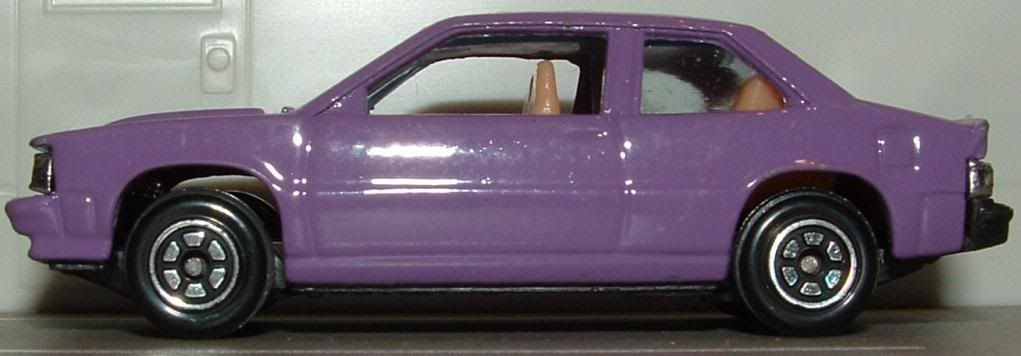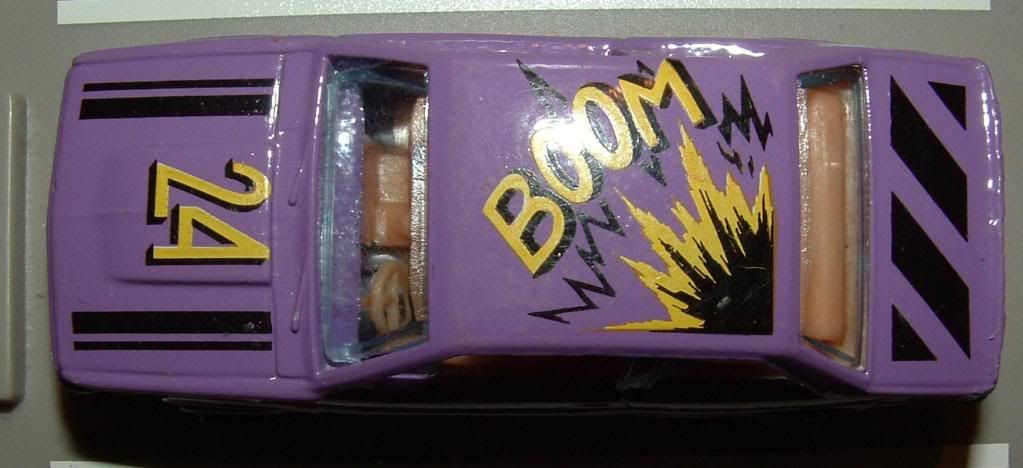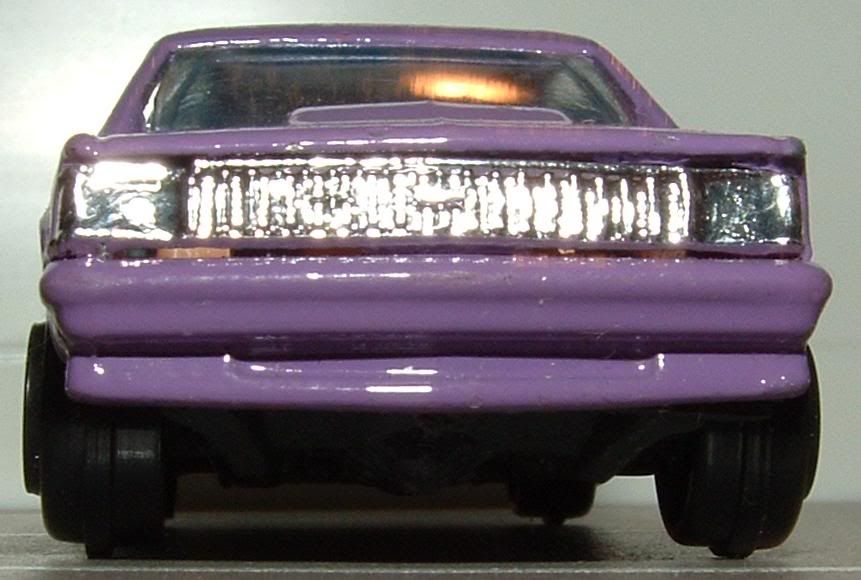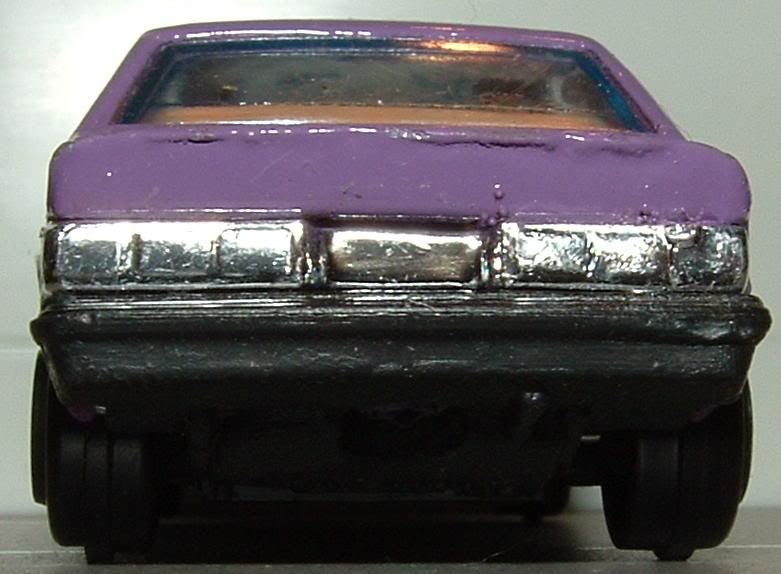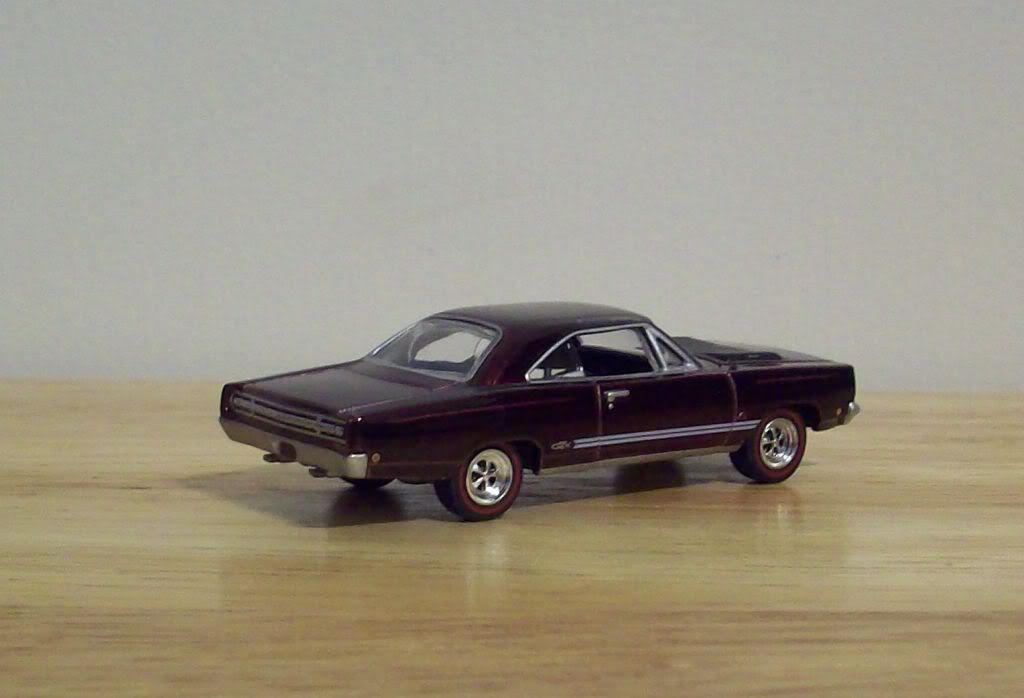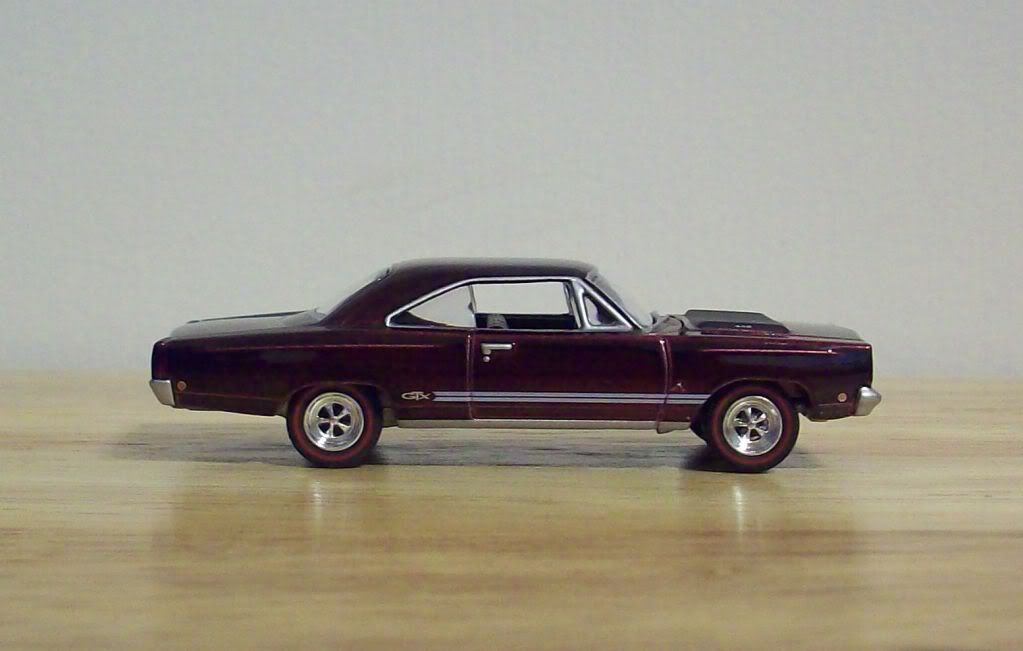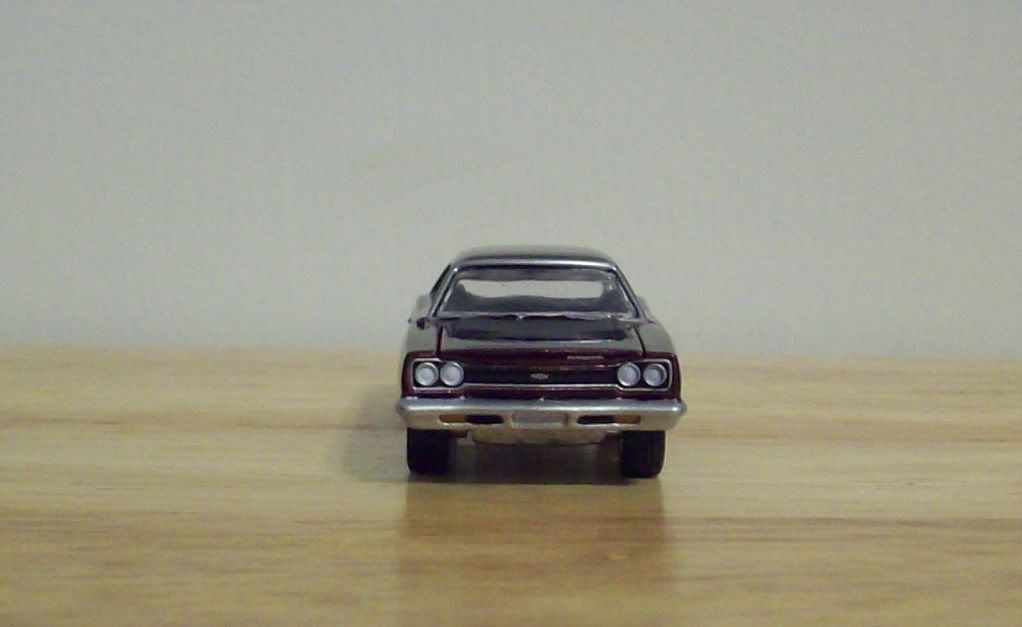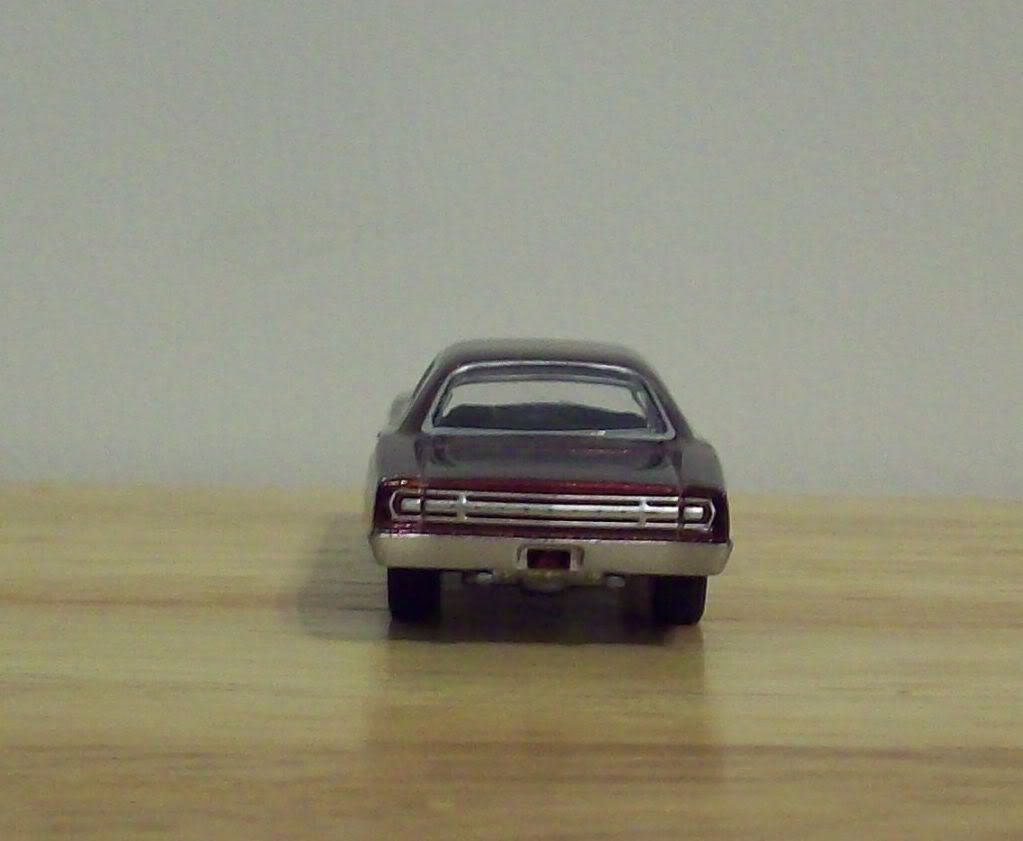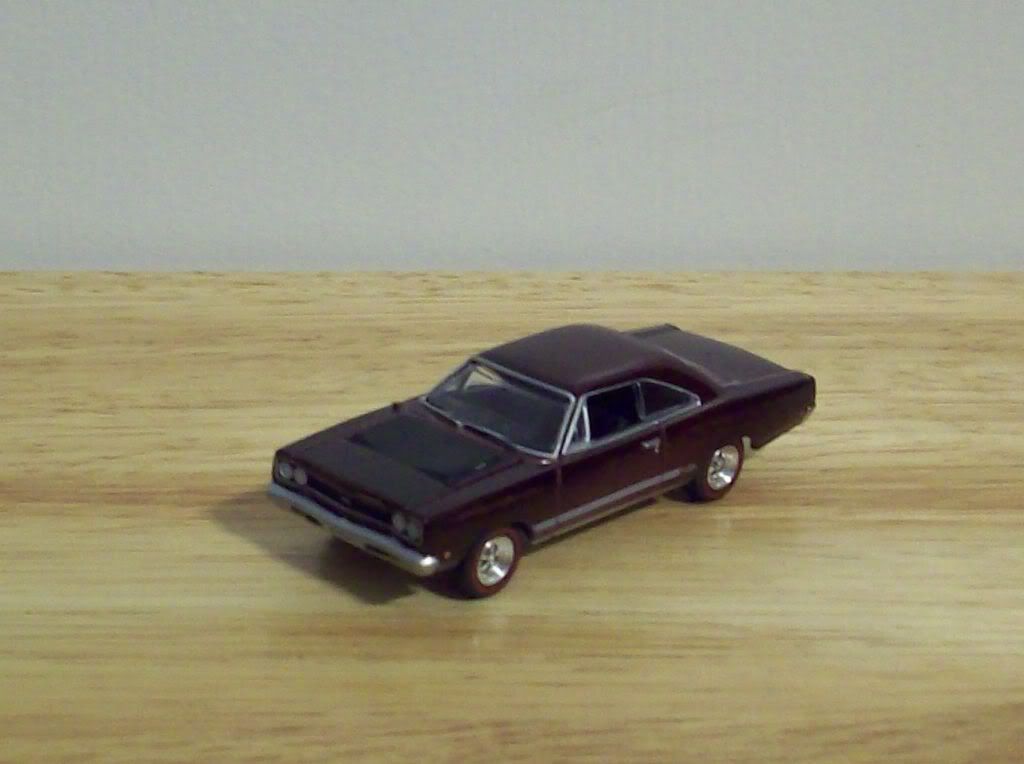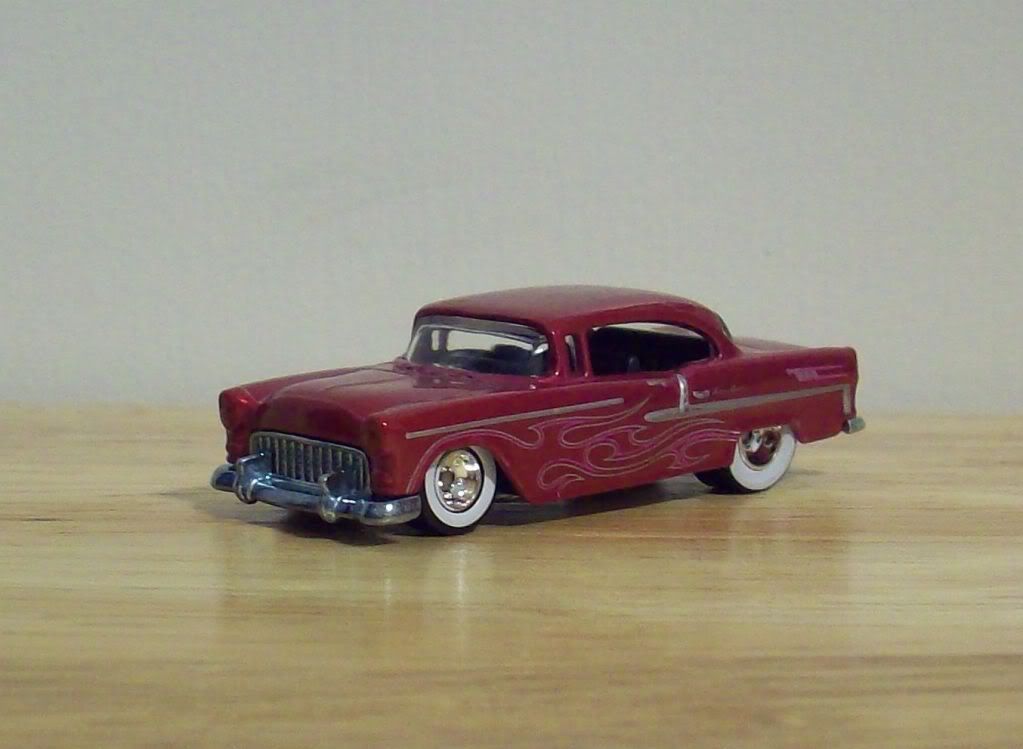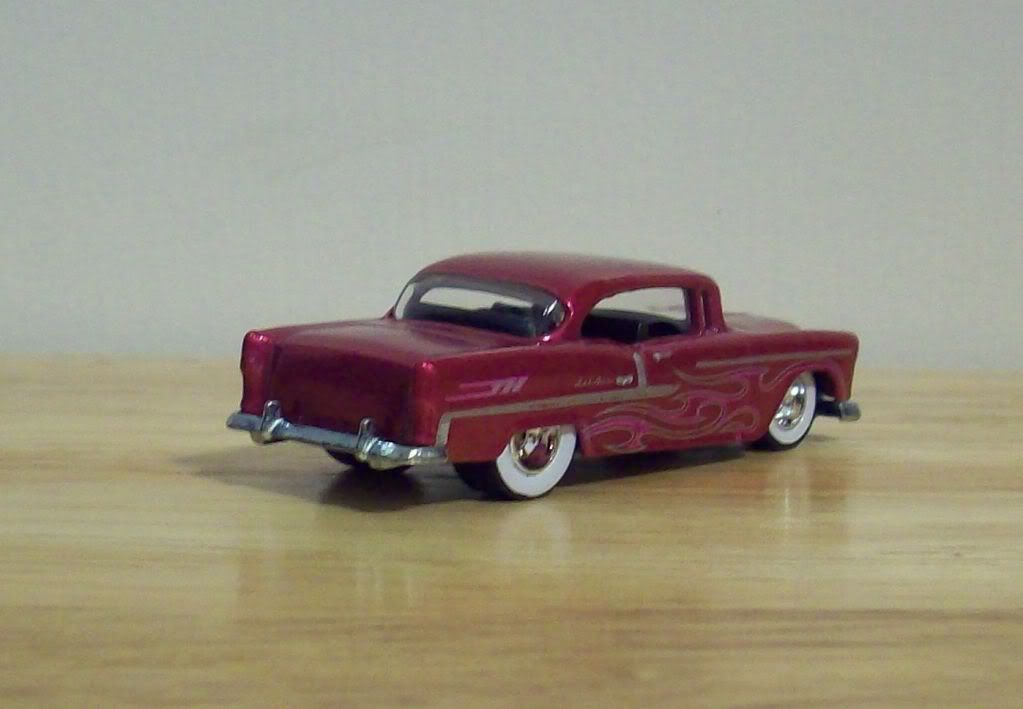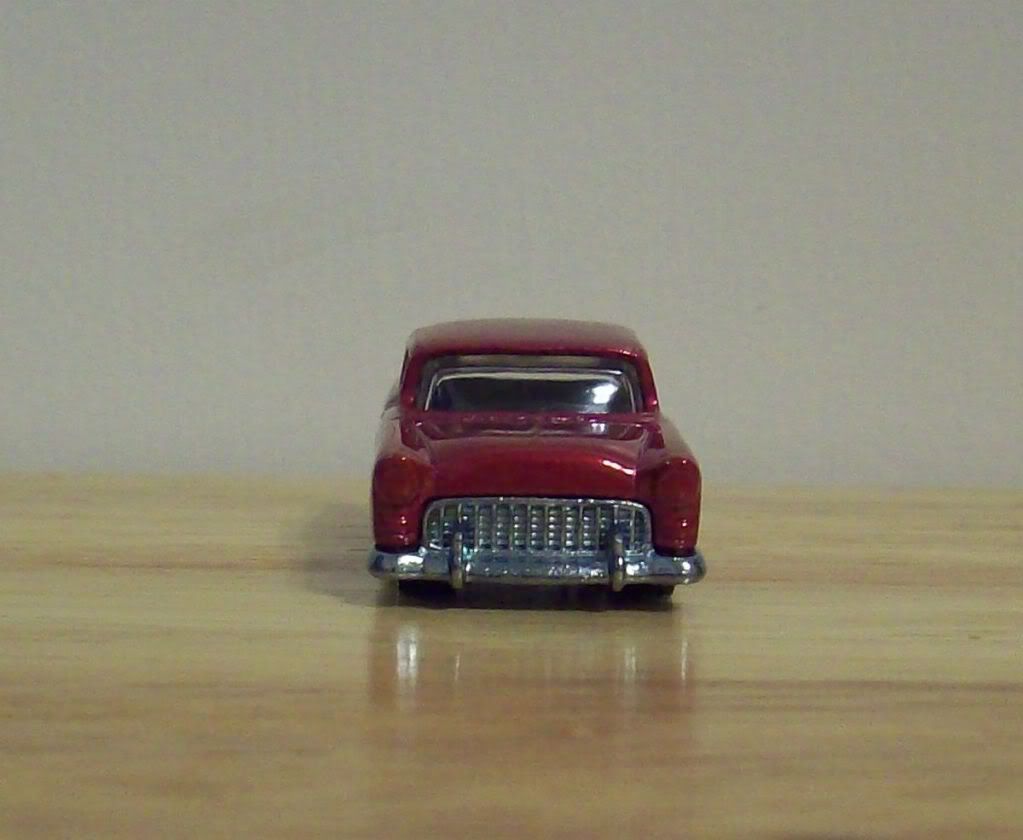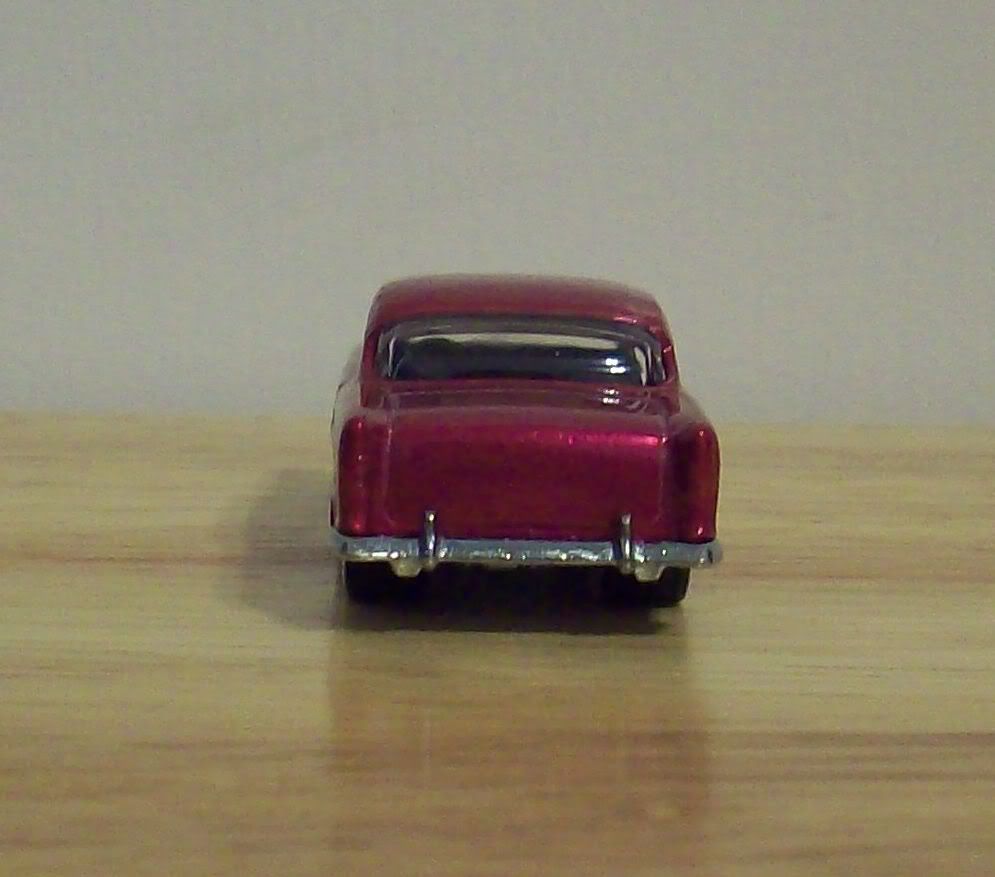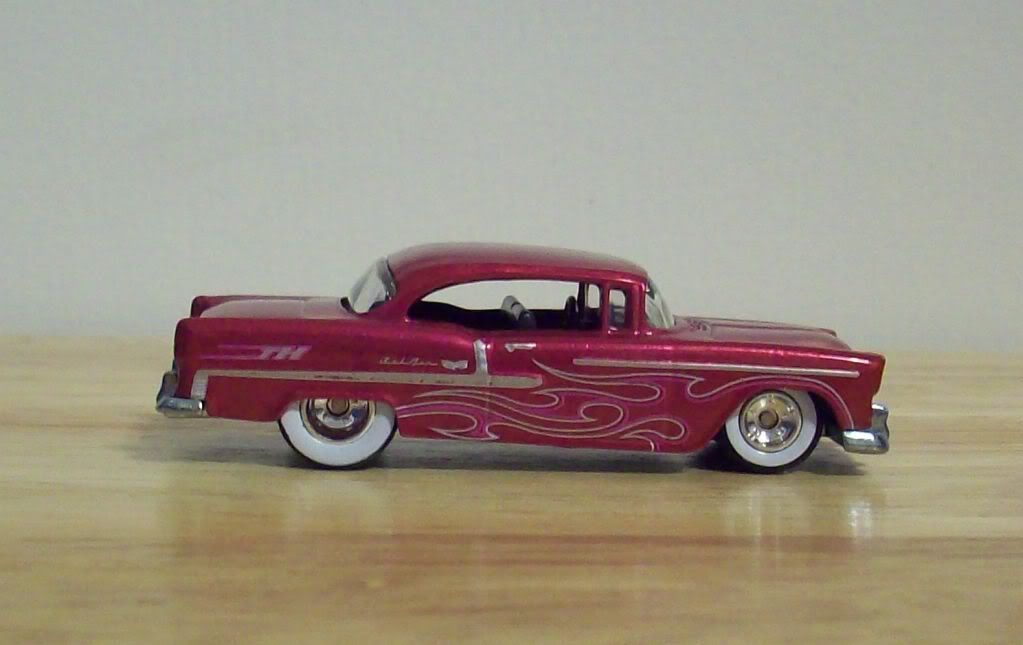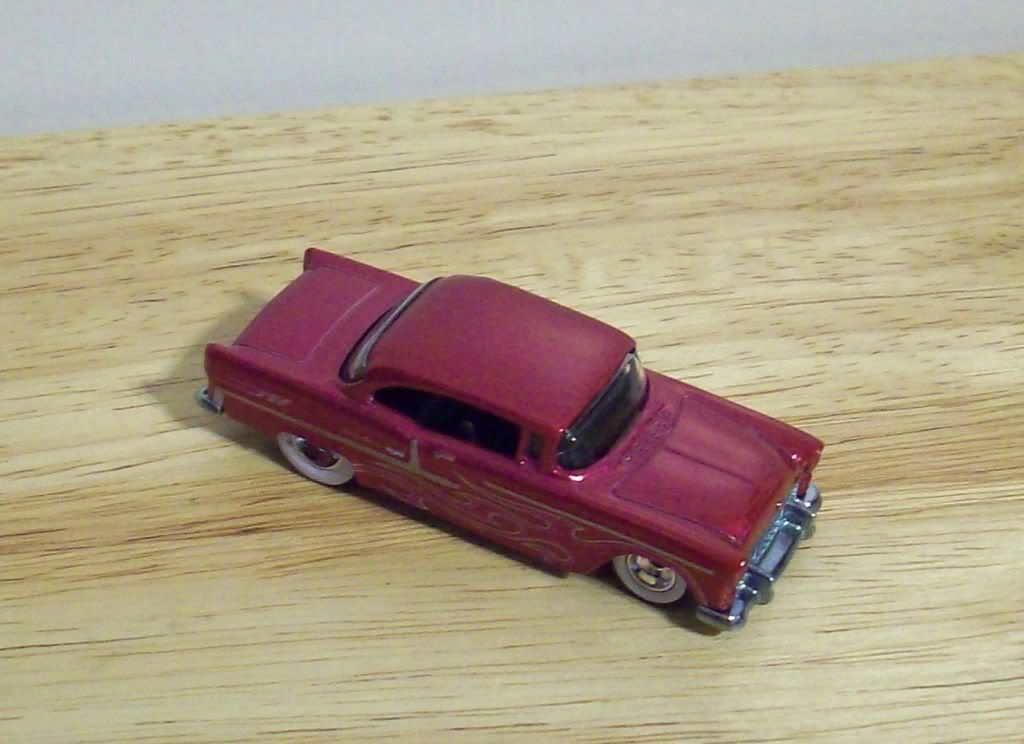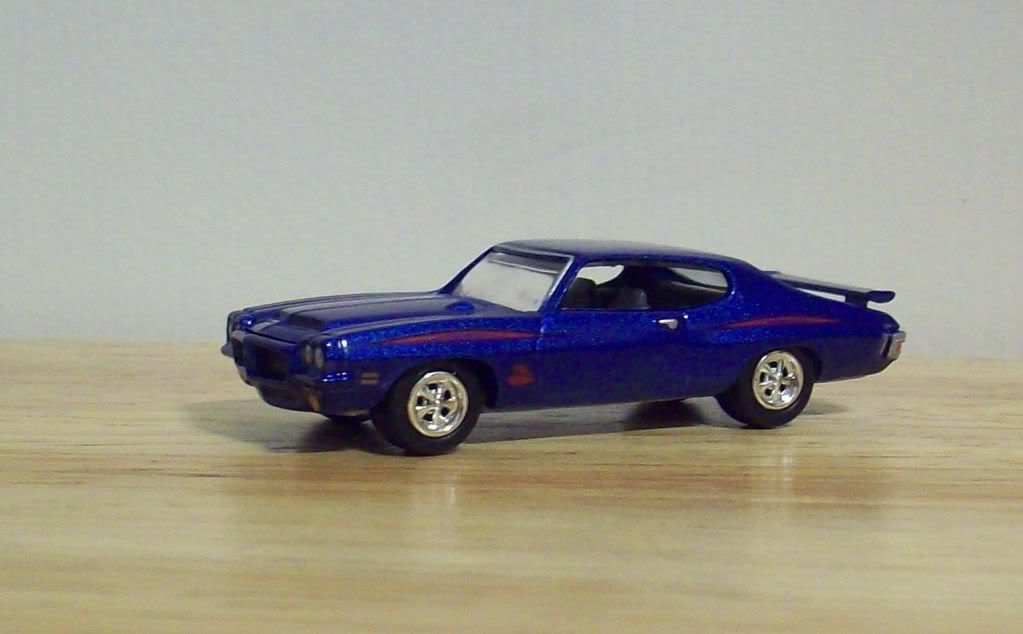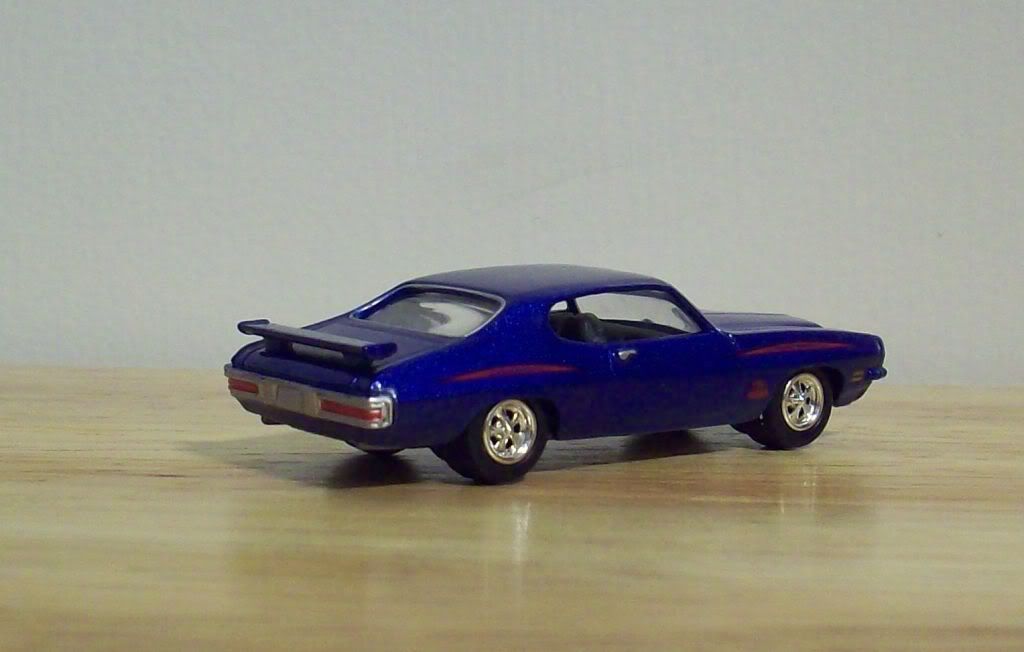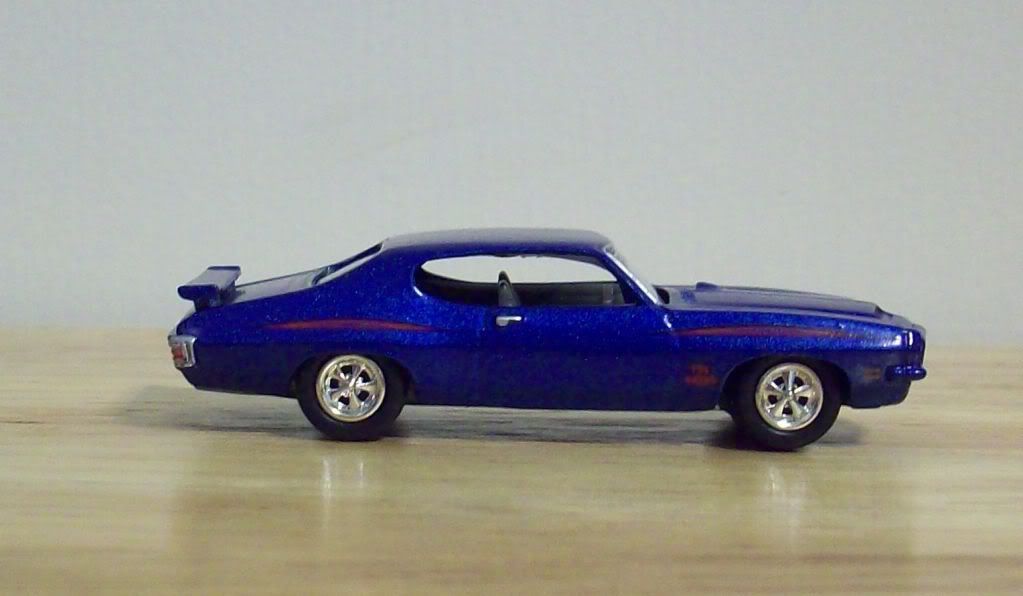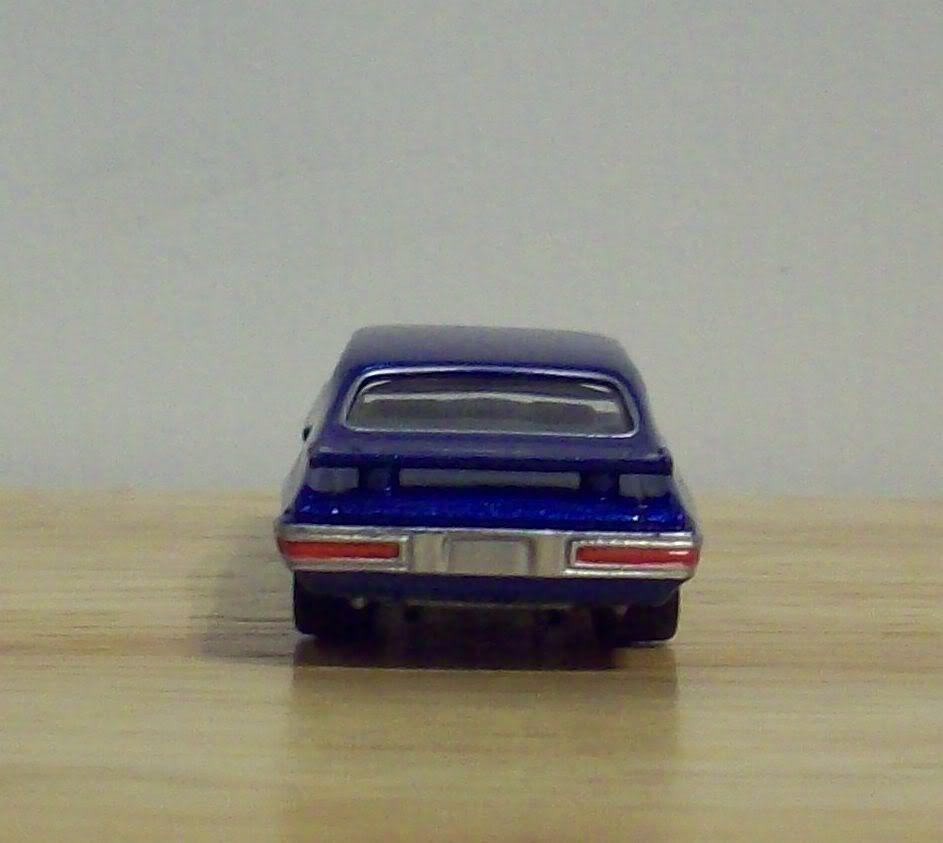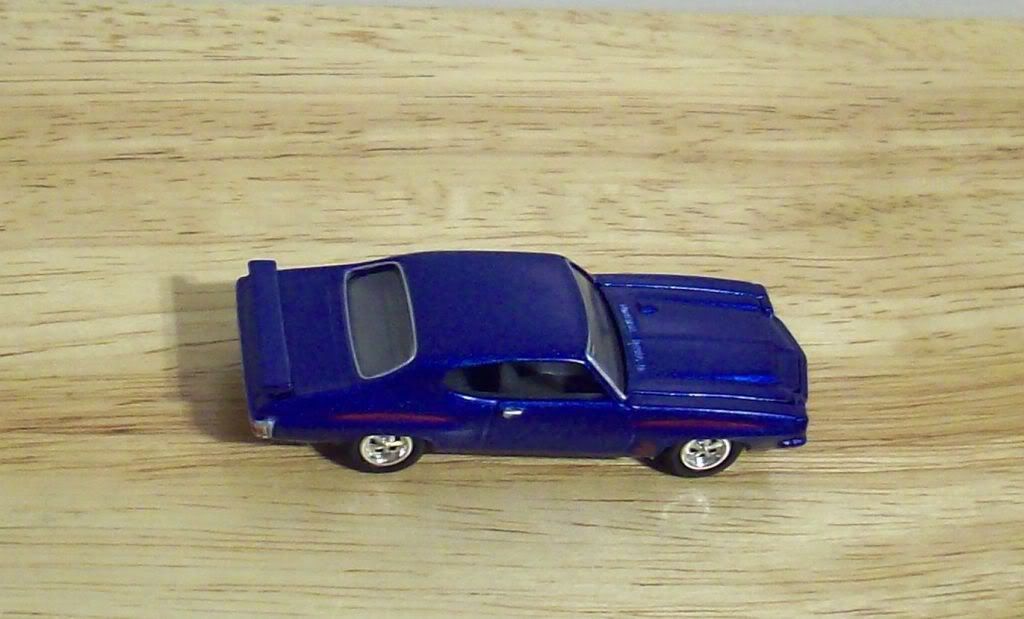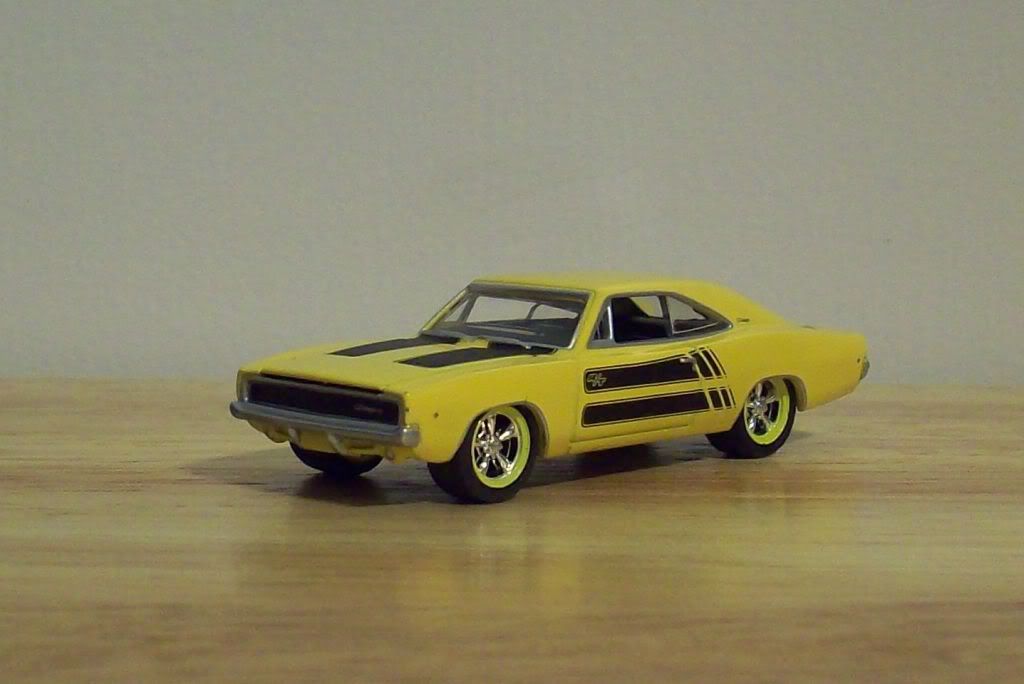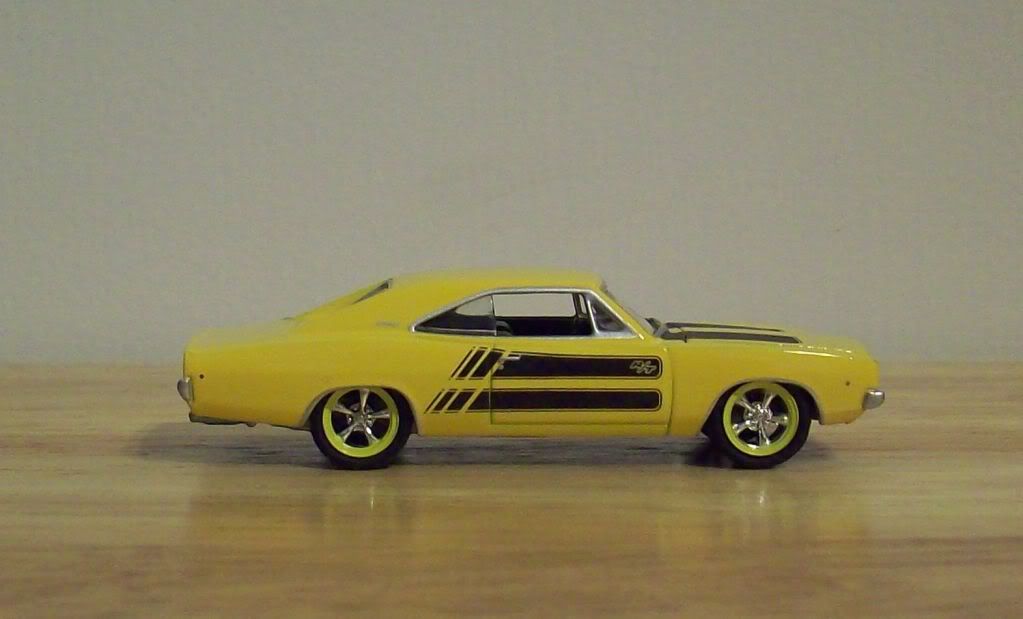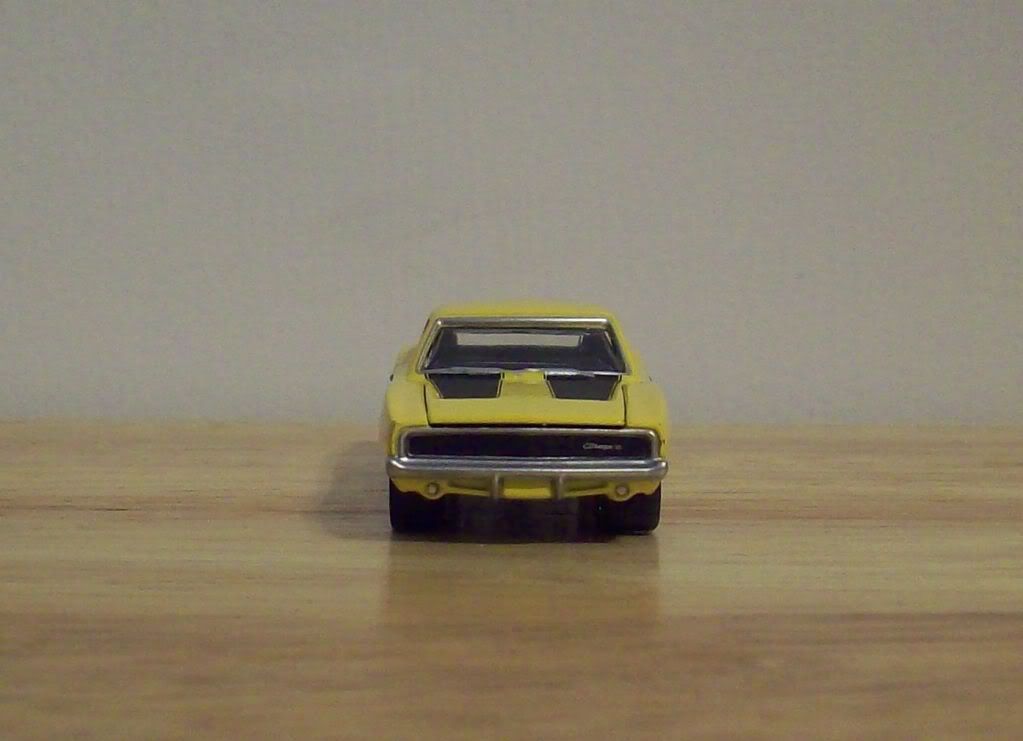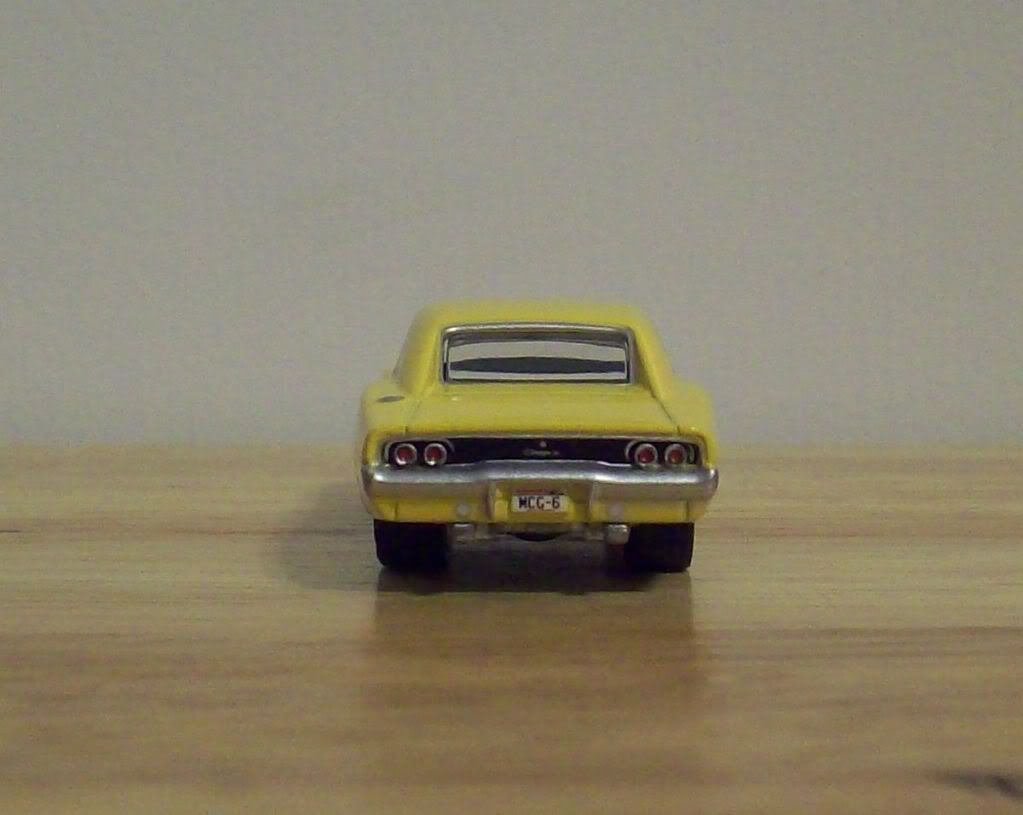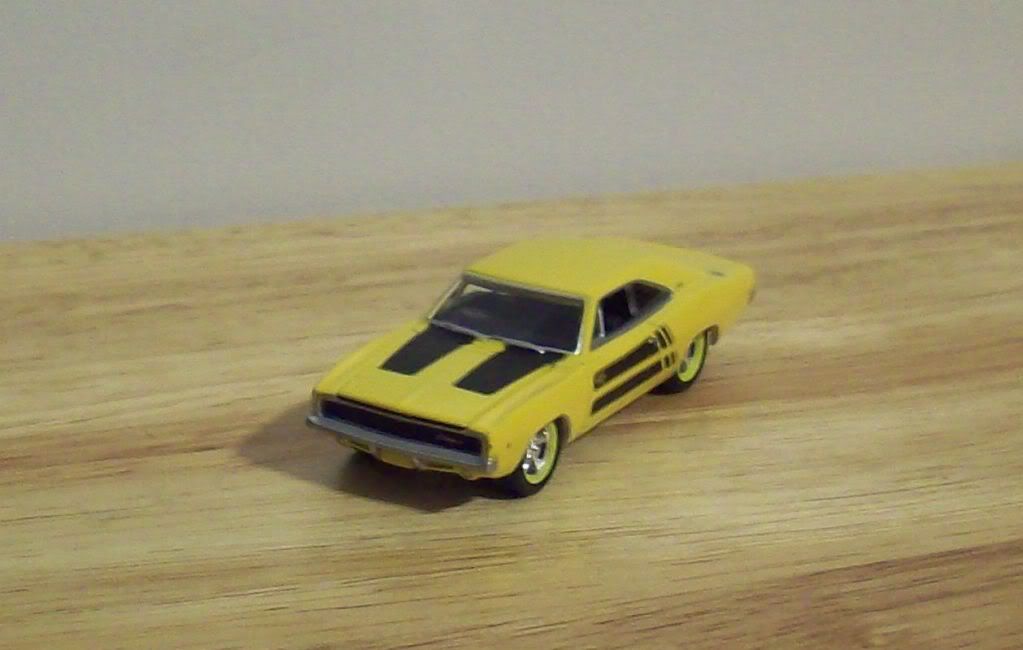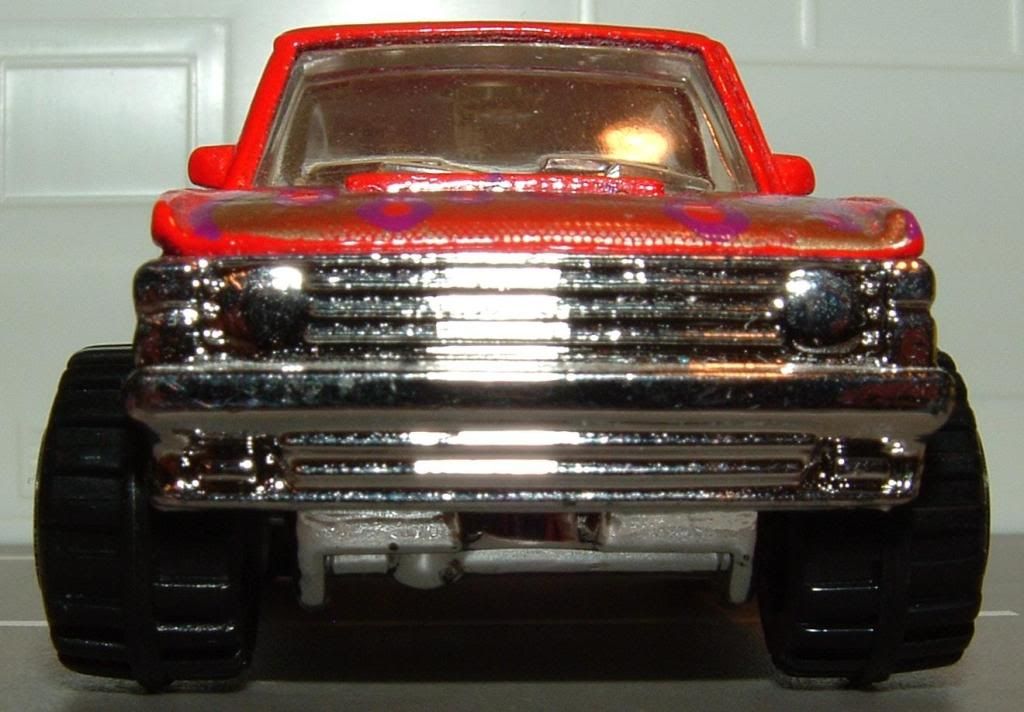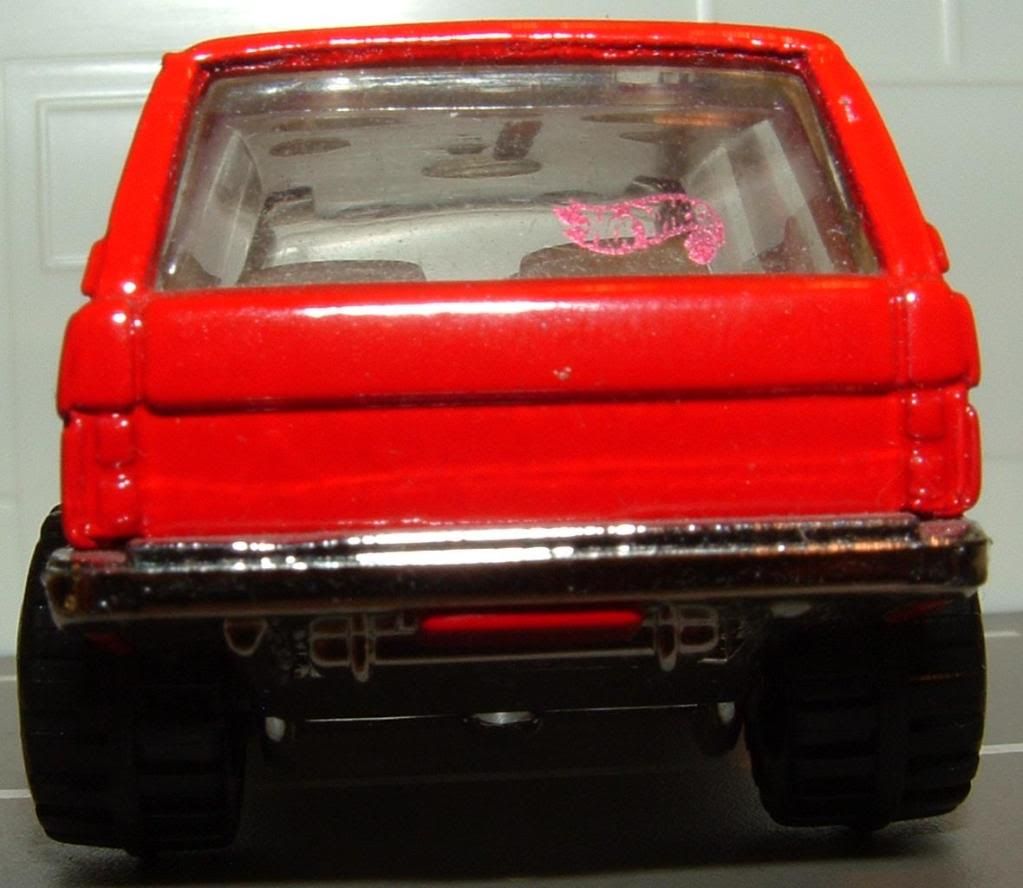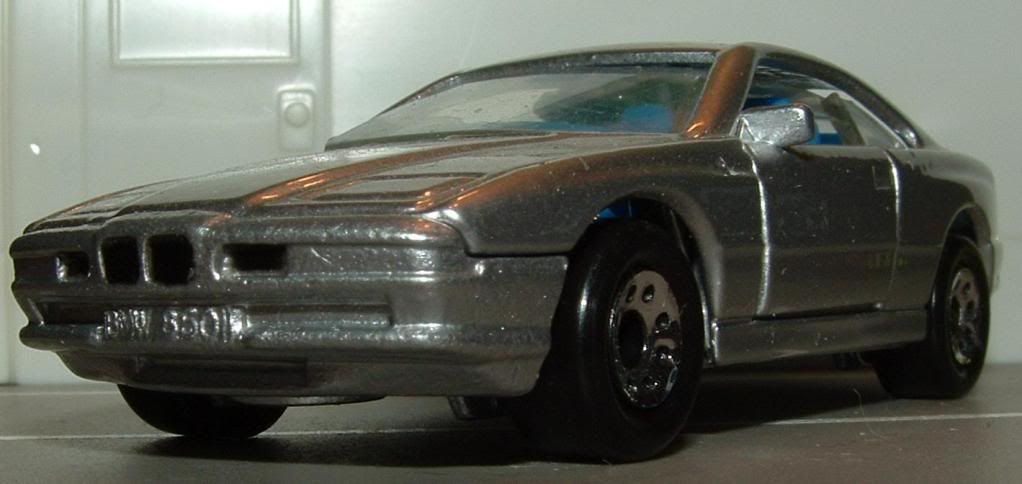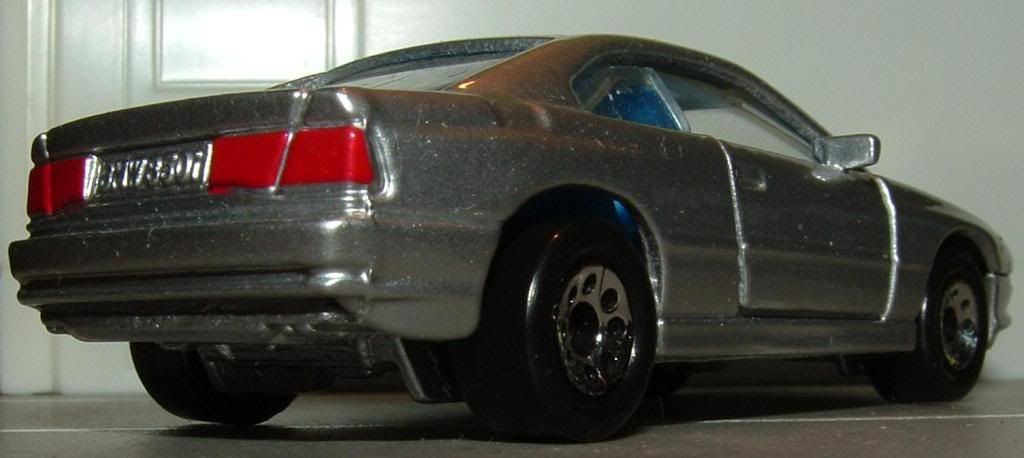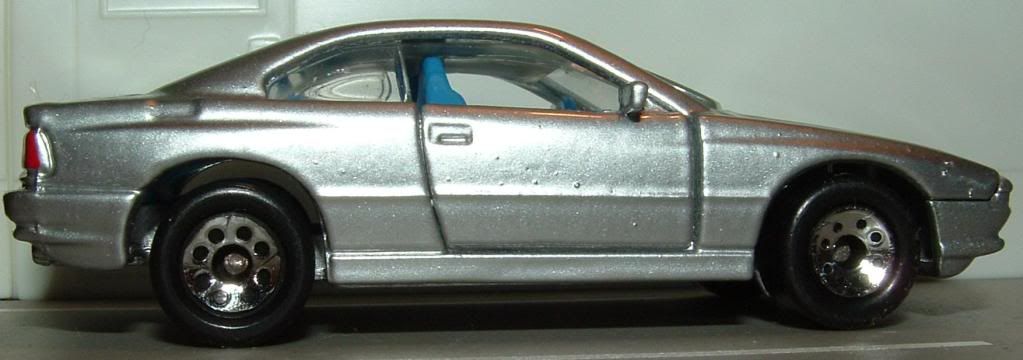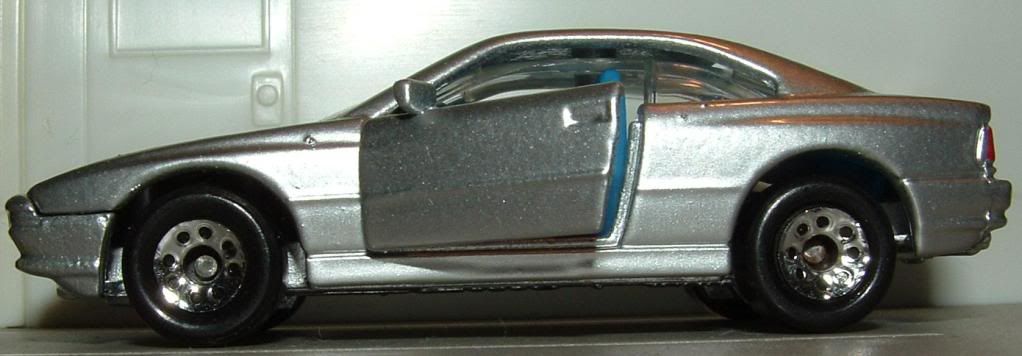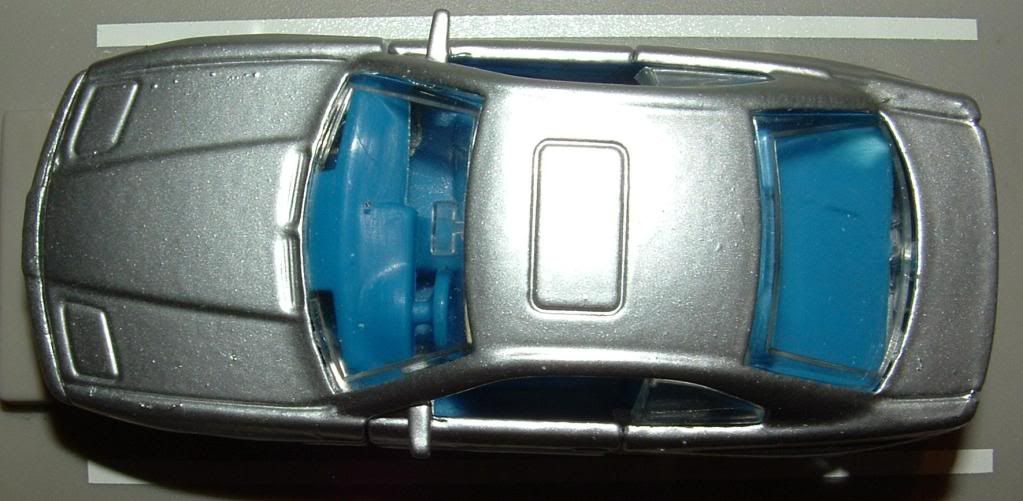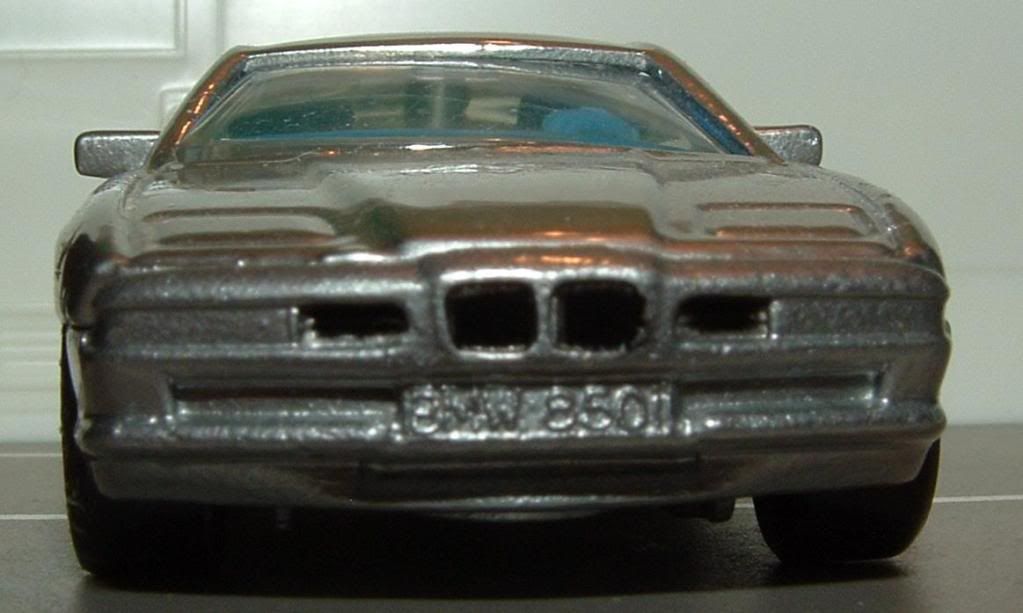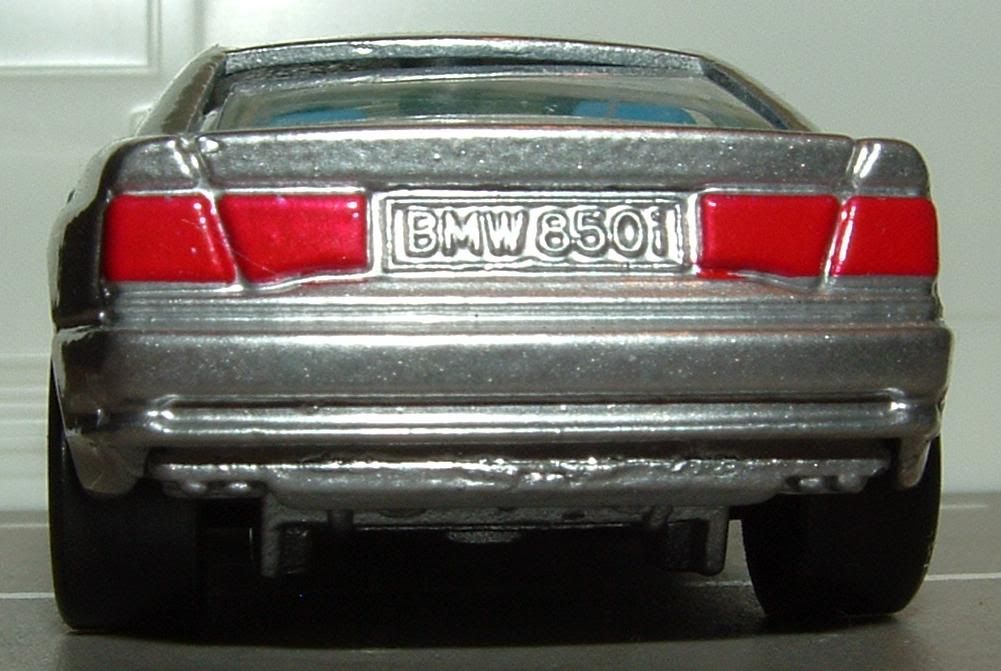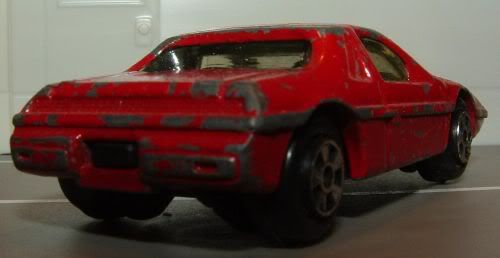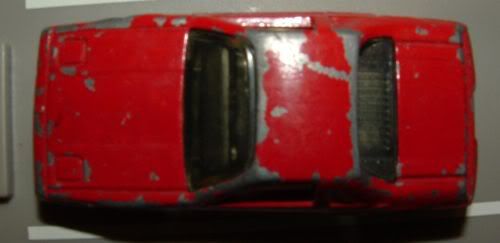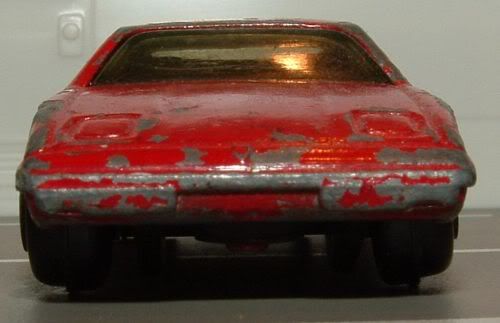
A blog focusing on 1/64 diecast from such popular brands as Hot Wheels, Matchbox, Johnny Lightning, M2 Machines, GreenLight, Tomica, Yat Ming, Majorette, MotorMax, Siku, Corgi, Guisval, Playart, Ertl, Zylmex, Racing Champions, & many more. Swifty's Garage features a daily Car Of The Day and news updates from your favorite brands!
Sunday, January 30, 2011
Car Of The Day: January 30, 2011
Today's car of the day is Yat Ming's 1981 Chevrolet Citation.
The Chevrolet Citation was a compact car sold by the Chevrolet brand of American automaker General Motors (GM) for model years 1980-1985. The Citation (originally to be named the "Condor") and its X-body siblings (Buick Skylark, Oldsmobile Omega, and Pontiac Phoenix) were among GM's first front wheel drive compact cars, following the trend of front drive compacts such as the Honda Accord and Volkswagen Dasher. 1,642,587 were produced.
For more information and pictures of the real car please visit: Chevrolet Citation
One of the few Citation castings in small scale- the others are by Hot Wheels and the upcoming Johnny Lightning casting. The other two are two-door hatchbacks and this is the only notchback coupe.
In anticipating consumer demand for smaller cars, GM switched from V8 engines to smaller, more economical V6 and 4-cylinder engines. The X-body cars were some 800 lb (360 kg) lighter than the rear-drive compacts they replaced. The Citation was Motor Trend magazine's Car of the Year for 1980, a decision later criticized by the staff of Car and Driver in 2009, citing that the poor build quality and mechanical reliability were not deserving of such an award in hindsight. 1980 model sales were brisk and the production lines were unable to keep up with the demand, causing significant delays in delivery to customers; some had to wait nine months to receive their vehicle. The Citation was also Chevrolet's first front-wheel drive car. Planning for this family of vehicles started in April 1974. The first prototypes were created in mid-summer 1976, with the intent of releasing it as a 1978 model. This did not happen, largely due to problems with supply of parts that up to that point, had never before been produced. Thus, the Citation was released in April 1979 as an early 1980 model. The Citation's initial retail price was under US$6,000. Three body styles were available, a 2-door coupe, also known as a notchback, 3-door hatchback and a 5-door hatchback. The front wheel drive design and hatchback bodies were a radical departure for the American industry, and GM was widely praised for the X-body's efficient packaging and smaller engines. Helped by an April 1979 release, the 1980 Citation sold around 800,000 units.
The X-body cars were the target of an unsuccessful lawsuit by NHTSA, which cited a tendency to lose control under heavy braking and power steering problems. The X-body cars were, however, recalled many times and the Citation's reputation took a beating, resulting in decreasing sales every year. The 1984 and 1985 models were badged Citation II in a halfhearted attempt to convince consumers that the vehicle's problems had been overcome to the extent that the car deserved a new name. The introduction of Chrysler's similarly packaged, but more conventionally styled K-cars (the Dodge Aries and Plymouth Reliant) for 1981, along with the GM J platform models (introduced in 1982) also ate into sales of the Citation. The slow selling 2-door coupe was dropped for 1981. However, it was reintroduced for 1982.
Saturday, January 29, 2011
Car Of The Day: January 29, 2011
Today's car of the day comes from Firehawk73's collection and is GreenLight's 1968 Plymouth GTX.
With the hot new Road Runner anchoring the lower rungs, a familiar name returned to top off Plymouth's midsize muscle car ladder. For its second season in 1968, the Plymouth GTX moved to the same redesigned Belvedere platform used by the Road Runner.
In keeping with its upscale mission, the 1968 Plymouth GTX featured two-door hardtop and convertible body styles; the '68 Road Runner started with a pillared coupe and didn't offer a ragtop.
Instead of adopting the 383-cid V-8 as its base engine, the 1968 Plymouth GTX carried over its '67 powertrains. The 375-bhp Magnum 440-cid four-barrel was standard, with the take-no-prisoners 425-bhp 426 Hemi the sole engine option. TorqueFlite automatic, a $206 extra on the Road Runner, was standard on the GTX, and the four-speed manual was a no-cost alternative. Both cars had similar suspension upgrades and wide-oval rubber; front disc brakes and a limited-slip diff were shared options. Nonfunctional hood vents also were common to both.
While even a loaded Road Runner looked pretty plain on the outside, the GTX dressed its part with standard chrome wheel-lip moldings, tail-panel brightwork, and double side stripes. And where the Road Runner started with a fleet-grade interior, the GTX came with the well-appointed Sport Satellite cabin featuring shiny details and fake woodgrain. The differences showed in base prices: $3,355 for the GTX hardtop, $3,034 for the Road Runner coupe.
Die-hard racer types loved the Hemi, but just 450 GTXs were ordered with the $564 option. The 440, which wasn't offered on the Road Runner, was easier to keep in tune. And unlike the rev-hungry Hemi, the big wedge churned out a surplus of low-end torque for unparalleled response on the street.
Deficiencies mirrored those of the Road Runner -- and of most other muscle intermediates: stiff ride, over-assisted power steering, and skittish handling on rough roads. But for a gentleman's supercar, the GTX was dialed in.
Friday, January 28, 2011
Car Of The Day: January 28, 2011
Today's truck of the day comes from Firehawk73's collection and is Hot Wheels' 1955 Chevrolet Bel Air.
The 1955 Chevrolet Bel Air was America's most popular car for 1955, which is saying something for a year in which Americans bought cars as never before. But then, the '55 Chevys were something really special.
This car is valuable to me not because its a "Super" Treasue Hunt. Its valuable to me because my wife found it for me. I was totally surprised when I came home that night. Not only is it a STH but its a nice TH. I like the '55 Chevys. They were great looking cars back then and they still look good compared to the new cars that are coming out now.
Start with styling. In a complete change from Chevy's stodgy past, the '55s were thoroughly up-to-date with Sweep Sight wrapped windshields atop "longer-lower-wider" bodies. Even so, wheelbase was unchanged at 115 inches, and the overall design was balanced and tasteful for the day. Vying for glamour with the top-line Bel Air convertible was a nifty new two-door wagon, the Bel Air Nomad, with unique hardtop roofline.
More exciting still was Chevy's first modern V-8, the 265-cubic-inch Turbo Fire that was already writing performance history. Though developed in just 15 weeks, this milestone motor was absolutely right from the start, and its 162-180 horsepower backed up Chevy's boast as 1955's "Hot One." You could still get a reliable 235.5-cid "Stovebolt Six," now with 123 bhp, but the V-8 was what most people wanted. Matching Chevy's newfound performance was an updated chassis with ball-joint front suspension, open "Hotchkiss" drive, and standard tubeless tires.
Chevy built 41,292 ragtop Bel Airs for '55, not nearly enough to go around -- then or now. As popular as they were more than 40 years ago, they enjoy even greater popularity today. And that's really saying something.
Thursday, January 27, 2011
Truck of the Day
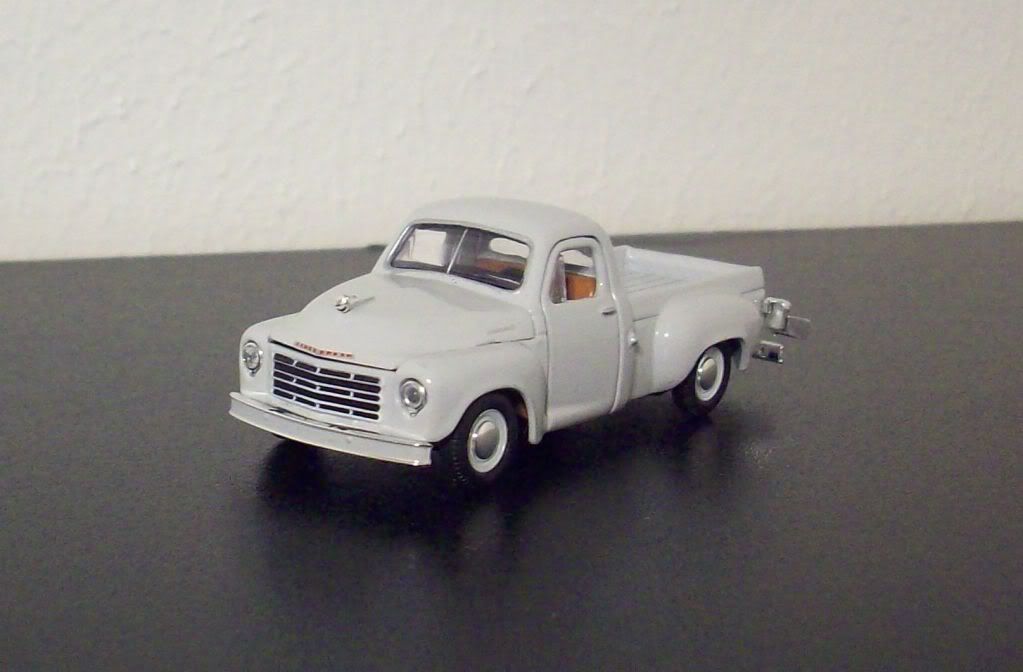
Today's truck of the day comes from Firehawk73's collection and is M2 Machines' Studebaker 2R.

The 1951 Studebaker 2R5 pickup was part of the Studebaker 2R series, the company's first postwar truck design. Billed as "The '49er," the Studebaker 2R family arrived in early 1948 to replace the prewar M-series.
Initially, there were four 2R models, spanning wheelbases from 112 to 195 inches. The 1/2-ton Studebaker 2R5 pickup and the 1-ton 2R15 pickup were powered by the 80-bhp Champion L-head six.
The 11/2-ton 2R16 and the 2-ton 2R17 pickups carried the Commander's 226-cid engine, with 94 horsepower. Standard transmission was a three-speed, with optional overdrive, two-speed rear axle, and "Hill-Holder" clutch.
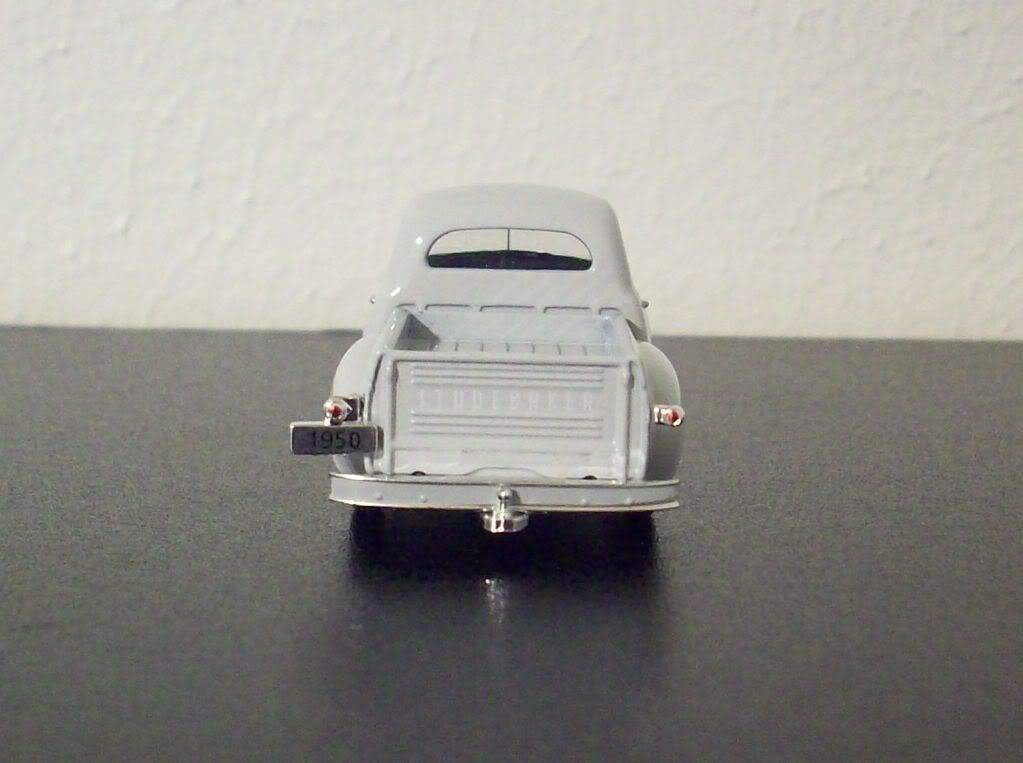
I know this is a 1950 and not a 1951 but there was no info on the 1950 Studebaker Truck. I can find info on the 1949 and 1951 but 1950. I find that kinda odd but you really can't tell these trucks apart in those years. Only engine and small under carriage details were changed and not the bodies of these trucks.
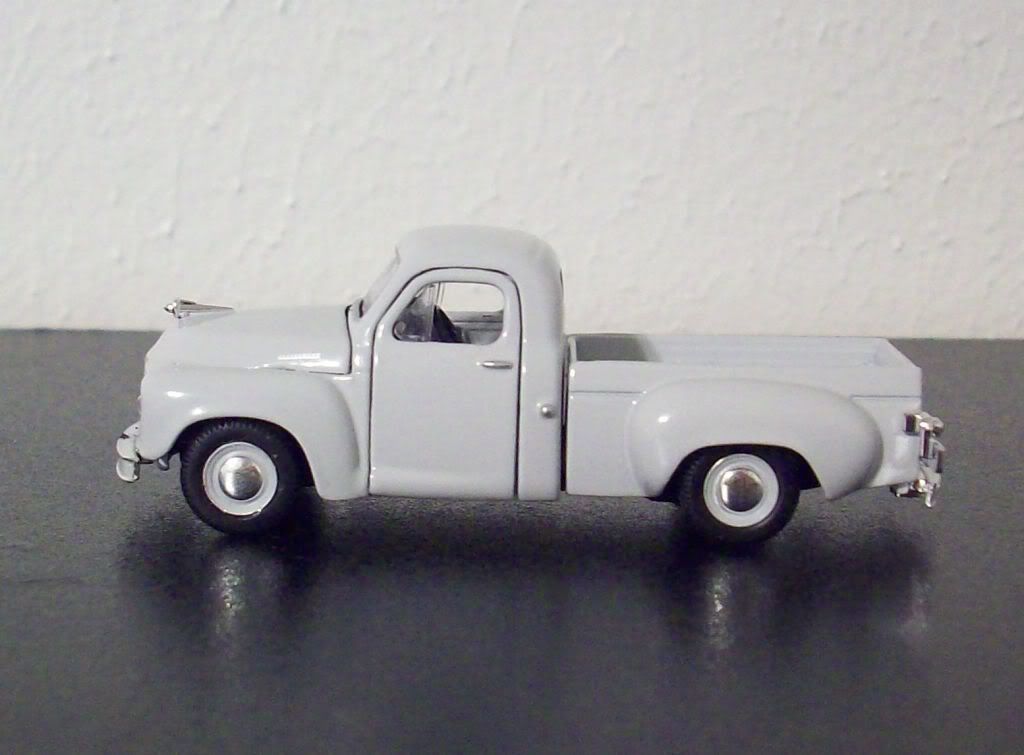
The chassis, although all new, was conventional. What set the Studebaker 2R pickup apart was its styling, principally the work of Robert Bourke, a member of (and later head of) the Loewy Studios design team then under contract with Studebaker.
Sure, the 2R pickup was far less adventuresome than Loewy's "which way is it going?" 1947 passenger cars. Yet it was distinct from other pickups of the day, with clean lines unsullied by running boards, a relatively low silhouette, and more glass area than most rivals.
The Studebaker 2R5 pickup also boasted a safety feature not seen on Big Three trucks until the 1970s: a gas tank mounted outside the cab. Several other functional advances were important: a double-wall box to protect the outer sheetmetal from unfriendly cargo; variable-ratio steering for easier maneuverability; and gauges mounted directly in the firewall to give what Studebaker called "lift-the-hood accessibility," intended to cut repair costs.
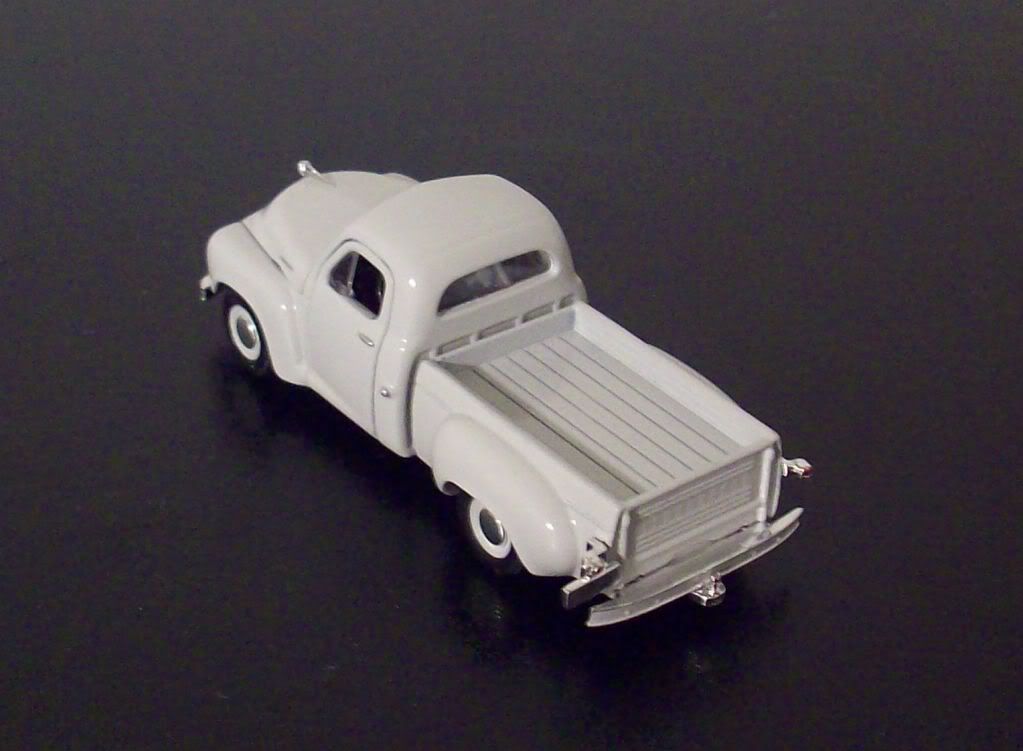
The dash itself was rather plain, but had full engine instrumentation. Other standard features included armrests, pivoting vent windows, door-activated courtesy light, and vinyl bench seat. Metal door panels replaced the M-series' cardboard-lined frames, but a cardboard headliner hung on.
The Studebaker 2R5 pickup continued through 1953 with virtually no change apart from engine boosts (to 85 and 102 bhp) in 1950. Thus, the 1951 Studebaker 2R5 pickup pictured with this article is almost impossible to distinguish from 2R5s from other model years.
Studebaker's first V-8 arrived for the passenger cars in 1951, but wouldn't enter trucks until 1954, in the Studebaker 2R pickup's successor.
Wednesday, January 26, 2011
Car Of The Day: Janaury 26, 2011
Today's car of the day is from Firehawk73's collection and is Johnny Lightning's 1971 Pontiac GTO.
The 1971 GTO had another modest facelift, this time with wire-mesh grilles, horizontal bumper bars on either side of the grille opening, more closely spaced headlamps, and a new hood with the dual scoops relocated to the leading edge, not far above the grille. Overall length grew slightly to 203.3 inches (516 cm).
A new corporate edict, aimed at preparing GM for no-lead gasoline, forced an across-the-board reduction in compression ratios. The Ram Air engines did not return for 1971. The standard GTO engine was still the 400 CID V8, but now with 8.2:1 compression. Power was rated at 300 hp (220 kW) at 4,800 rpm and torque at 400 lb·ft (542 N·m) at 3,600 rpm. An engine option was the 455 CID V8 with four-barrel carburetor, 8.4 to 1 compression ratio and 325 hp (242 kW), only available with the automatic transmission. The top GTO engine for 1971 was the new 455 HO with 8.4 compression, rated at 335 hp (250 kW) at 4,800 rpm and 480 lb·ft (651 N·m) at 3,600 rpm.
Well, there is not whole lot of information on this car as the other years of GTOs. I do know that sales started to drop on the GTO in '71 making them somewhat collectible because not alot of them were sold. Too bad because its really a nice looking car.
Motor Trend tested a 1971 GTO with the 455, four-speed transmission, and 3.90 axle, and obtained a 0-60 mph time of 6.1 seconds and a quarter mile acceleration of 13.4 seconds at 102 mph (164 km/h).
The Judge returned for a final year, now with the 455 HO as standard equipment. Only 374 were sold before The Judge was discontinued in February 1971, including 17 convertibles—today the rarest of all GTOs, aside from the 1969 Ram Air IV convertible (which runs about $750,000 if you can find one).
Only 10,532 GTOs were sold in 1971.
Tuesday, January 25, 2011
Car Of The Day: January 25, 2011
Today's car of the day comes from Firehawk73's collection and is GreenLight's 1968 Dodge Charger R/T.
Mopar fans still bristle at the thought of Steve McQueen's 390 Mustang besting that black 440 Charger R/T. At least producers of the hit film Bullitt knew what they were doing when they cast the redesigned Dodge as McQueen's foil. The 1968 Dodge Charger R/T Hemi was a muscle car with star quality.
Charger's new hidden-headlamp grille, curvy body, elegant recessed backlight, refined tail, and spare use of chrome represented a styling high point for '60s muscle cars. And in R/T form, its performance justified equal praise.
For $3,506, the R/T came with the 375-bhp 440-cid four-barrel Magnum V-8, heavy-duty brakes, R/T handling package, and F70Xl4 tires. The rear bumblebee stripe could be left off, while inside, the original Charger's space-age interior gave way to less flashy, more functional decor.
This is of course not the stock look of this car. I wanted a more colorful representation of this car for car of the day. The body style or generation is my favorite Mopar of all time. I would love to own the 1:1 version of '68,'69 and /or a'70 Dodge Charger.
The only engine option was the mighty 426 Hemi, at $605. Chrysler strengthened it for '68, with a slightly longer-duration cam, new valve springs, and revisions that reduced oil consumption. It was still underrated at 425 bhp, but as Car and Driver marveled, "There just isn't more honest horsepower available off the showroom floor than you get from this bright orange monster."
Either engine could be hooked to a TorqueFlite automatic with a floor lever or a four-speed with a Hurst Competition-Plus shifter. Automatic was the ticket for straight-line acceleration, and Hemi cars got a special high-stall-speed torque converter (3.23:1 gears were standard). The driver could upshift at 6500 rpm, or let the TorqueFlite do it at 5500. In traffic, the Hemi could be driven like a docile small-block yet was more than half a second quicker and 10 mph faster in the quarter-mile than a 440 Charger.
The '68 model's new bucket seats lacked support, and its flying-buttress roof pillars reduced rear visibility. On R/Ts, handling was a nose-heavy chore, and such essential items as a tach, power-front disc brakes, and power steering were options. Still, Charger sales increased sixfold over '67, leaving just one question: How would McQueen have done against a Hemi?
The 1968 Dodge Charger R/T Hemi
Specifications
Wheelbase, inches: 117.0
Weight, lbs: 4,300
Number built: 475
Base price: $4,800
Top Available Engine
Type: ohv V-8
Displacement, cid: 426
Fuel system: 2 x 4bbl.
Compression ratio: 10.25:1
Horsepower @ rpm: 425 @ 5000
Torque @ rpm: 490 @ 4000
Representative Performance
0-60 mph, sec: 5.3
1/4 mile, sec. @ mph: 13.8 @ 105
Monday, January 24, 2011
SUV Of The Day: January 24, 2011
Today's car of the day is Hot Wheels' 1989 Range Rover Classic.
The Range Rover Classic is a 4x4 luxury SUV series built by British car maker Land Rover from 1970 to 1996. It was the first generation of vehicles produced under the Range Rover name. For most of its history, it was known simply as the "Range Rover"; Land Rover coined the term "Range Rover Classic" for the brief period the model was built alongside its P38A successor, and applied the name retrospectively to all first-generation Range Rovers.
For more information and pictures of the real car please visit: Range Rover Classic
Early luxury SUVs had long lifespans. This Range Rover and the Jeep Wagoneer being the two standout examples. Both lasted well over twenty years with minimal changes, and provided nice profits to their respective manufacturers.
Although only intended to be a post-war stopgap, the Rover Company's Land Rover 4x4 launched in 1948 proved to a be a worldwide success; within two years it was vastly outselling the company's usual product of semi-luxury cars. The Land Rover had been designed to be cheap and easy to produce and to suit hard work in tough terrain. It was thus a very simple, basic vehicle with a minimum of concessions to comfort- on early vehicles the canvas hood, passenger seats and even doors were optional extras. From the beginning Rover realised that a market existed for a Land Rover that was off-road capable but more comfortable and civilised. In 1949 it released the Land Rover Station Wagon with a coachbuilt wood-framed body by Tickford. Whilst a big improvement on the standard vehicle (the Tickford had seven seats, floor carpets, a heater, a one-piece windscreen and other car-like features) its hand-built nature kept prices high and fewer than 700 were sold before sales were stopped in 1951.
In 1954 Land Rover launched its second type of Land Rover Station Wagon, this time built by the company itself. The new version was much more successful but was aimed more at the commercial user who needed an off-road people carrier rather than the buyer requiring car like comfort in an off-roader. The Station Wagon was based on the commercial variant of the Land Rover but with seats fitted to the load space and windows cut into the sides. Whilst available with features such as an interior light, heater, door and floor trims and upgraded seats the Station Wagon retained the base vehicles tough and capable but firm suspension as well as its mediocre road performance.
By the late 1950s Rover remained convinced that a market existed for a vehicle combining the toughness and ability of the Land Rover with the comfort of a Rover saloon car. In 1958 the first of the 'Road Rover' concepts were built. These were a series of development cars built by the engineering department consisting of Land Rover chassis and running gear clothed in a functional but car-like estate car body. The Road Rover was aimed at markets such as Africa and Australia where ordinary motorists faced long journeys on unmade roads where a vehicle with four-wheel drive and tough suspension was a benefit.
By the 1960s Rover was becoming aware of the development of the Sports Utility Vehicle in North America. SUVs such as the International Harvester Scout and the Ford Bronco offered a different blend of off- and on-road ability to existing utility 4x4s such as the Land Rover and the Jeep, proving capable of good on-road comfort and speed whilst retaining more than adequate off-road ability for most private users. The Jeep Wagoneer proved the concept further. The final element of what would become the Range Rover concept was provided by the President of Rover's USA operations who, frustrated by the lack of suitable vehicles from Britain to compete with the new crop of SUVs sent Rover a Land Rover Series II 88 fitted with a Buick V8 which offered far greater on-road performance and refinement than any Land Rover currently in production.
Rover acknowledged the emergence of this new market for recreational off-roaders and in 1967 began the '100-inch Station Wagon' programme to develop a radical car to compete, with Charles Spencer King in charge. King quickly defined the basic layout of the new vehicle, realising that only long-travel coil springs could provide the required blend of luxury car comfort and Land Rover-like off-road ability (King is said to have been convinced by coil springs when driving a Rover P6 across rough scrubland on part of the Solihull factory site that was being redeveloped, but Rover also bought a Ford Bronco which featured such a suspension system in the early stages of the 100"SW programme). Spencer King was also convinced that a permanent four wheel drive transmission was needed to provide both adequate handling and to reliably absorb the power that would be required by the vehicle if it was to be competitive. This required a totally new transmission unit to be developed but Rover spread development costs between the 100"SW project and that working on what would become the Land Rover 101 Forward Control. The adoption by Rover of the Buick alloy V8 engine had provided the perfect powerplant for the new 4x4, being powerful, light and sturdy. Various modifications were made to the design to suit use in the Range Rover such as fitting different carburretors that maintained fuel supply at extreme angles and making provision for the engine to use a starting handle in emergencies.
The final design, launched in 1970 with bodywork styled largely by the engineering team rather than David Bache's styling division, was marketed as 'A Car For All Reasons'. In its original guise the Range Rover was more capable off-road than the Land Rover but was much more comfortable, offered a top speed in excess of 100 MPH, a towing capacity of 3.5 tons, spacious accommodation for 5 people and groundbreaking features such as an 8-speed permanent four-wheel-drive gearbox and hydraulic disc brakes on all wheels.
Sunday, January 23, 2011
Car Of The Day: January 23, 2011
Today's car of the day is Matchbox's 1991 BMW 850i.
The BMW 8 Series (chassis code: E31); is a V8 or V12-engined 2-door 2+2 coupe built by BMW from 1989 to 1999. While it did supplant the original E24 based 6 Series in 1991, a common misconception is that the 8 Series was developed as a successor. However, it was actually an entirely new class aimed at a different market, with a substantially higher price point and better performance than the 6 series. It was BMW's flagship car and had an electronically limited top speed of 155 mph (250 km/h).
For more information and pictures of the real car please visit: BMW 850i
The 850i was a popular choice in diecast, with examples from Matchbox, Hot Wheels, Corgi, and Yat Ming, among others. I like the Matchbox casting the best, personally.
Design of the 8 Series began in 1986, with construction starting in the same year. The 8 Series debuted at the Frankfurt Motor Show (IAA) in early September 1989. The 8 Series was designed to move beyond the market of the original 6 Series. The 8 and 6 Series cars were distinctly different in design, though both were considered Supercars. The 8 Series however had substantially improved performance, as well as a far higher purchase price.
Over 1.5 billion Deutschemark was spent on total development (2008 USD nearly $1 billion). BMW used CAD tools, still unusual at the time, to design the car's all-new body. Combined with wind tunnel testing, the resulting car had a drag coefficient of 0.29, a major improvement from the previous BMW M6/635CSi's 0.39.
This model was designed as a direct competitor to the upcoming Mercedes-Benz SL-Class and S-Class coupes (later renamed the CL-Class). While it has less rear passenger volume than the CL which is considered a two-door sedan, the 8 Series could accommodate two passengers in the rear, while the SL roadster is a two-seater.
The 8 Series supercar offered the first V-12 engine mated to a 6-speed manual gearbox on a road car. It was also the first vehicle with an electronic "fly-by-wire" throttle. The 8 Series was one of BMW's first cars, together with the Z1, to use a multi-link rear axle.
While CAD modeling allowed the car's unibody to be 8 lb (3 kg) lighter than that of its predecessor, the car was significantly heavier when completed due to the large engine and added luxury items—a source of criticism from those who wanted BMW to concentrate on the driving experience.
Sales of the 8 Series were affected by the global recession of the early 1990s, the Persian Gulf War, and energy price spikes. BMW pulled the 8 Series out of the North American market in 1997, selling only 7,232 cars over seven years. BMW continued production for Europe until 1999. The ultimate worldwide production total was 31,062.
This was the first model launched in 1990 with the 5 litre M70B50 V12 engine producing 300 PS (221 kW; 296 hp). It was available with either a 4-speed automatic or a 6-speed manual gearbox.
Saturday, January 22, 2011
Car Of The Day: January 22, 2011
Today's car of the day is Ertl's 1984 Pontiac Fiero 2M4.
The Pontiac Fiero was a mid-engined sports car that was built by the Pontiac division of General Motors from 1984 to 1988. The Fiero—meaning "proud" in Italian and "wild", "fierce", or "ferocious" in Spanish—was designed by Hulki Aldikacti as a Pontiac sports car. The Fiero was the first two-seater Pontiac since the 1926 to 1938 coupes, and also the first mass-produced mid-engine sports car by a U.S. manufacturer. Many technologies incorporated in the Fiero design such as plastic body panels were radical for its time. Alternative names considered for the car were Sprint, P3000, Pegasus, Fiamma, Sunfire, and Firebird XP. The Fiero 2M4 (2-seat, Mid-engine, 4-cylinder) was on Car and Driver magazine's Ten Best list for 1984. The 1984 Fiero was the Official Pace Car of the Indianapolis 500 for 1984, beating out the new 1984 Chevrolet Corvette for the honor.
370,168 Fieros were produced over the relatively short production run of 5 years; by comparison, 163,000 Toyota MR2s were sold in its first 5 years. At the time, its reputation suffered from criticisms over performance, reliability and safety issues. Today however, compared to less adventurous attempts at two-seaters such as the Ford EXP, the unique style of the Fiero compared to other American cars has left it a cult following as a collectible car. It remains a popular chassis for rebodies and even electric conversions.
For more information and pictures of the real car please visit: Pontiac Fiero
I apologize for the poor photo quiality. My camera does not like red or black cars, I've noticed (and the lighting apparently was not up to normal standards, either). This well-worn example is a recent purchase from old442dude (thanks Eric!) and marks the first example of this casting in my collection. Having recently written an article on Fieros for the Collector's Corner portion of the site, I felt it needed to join my collection (and these pics will join that thread, momentarily). Overall, however, there are better Fieros in small scale. A few years back GreenLight had a series called Pace Car Garage and I was really hoping it would continue. They never got around to the Fiero, but if the series ever makes a comeback I hope they do it!
1984 was the first production year for the Pontiac Fiero, beginning production in August 1983. In an effort to sell the car as being economically sensible, GM equipped and sold the Fiero as a commuter car; however, the marketing build up leading to initial release indicated anything but a regular commuter. The car also proved uncomfortable for some drivers because of the lack of power steering.
1984 was the only year in which the Limited "Indy Pace Car" edition, consisting of an Indianapolis 500-themed option package on SE-model vehicles, was offered (excepting 1985, in which the package was specially reissued). Approximately 2,000 of these vehicles were sold. The Indy had aero body cladding and new front and rear fascias that would be used on the 1985 GT. Only the underpowered 4-cylinder engine was available, though a few prototypes could be seen driving around the Greater Detroit area with a unique periscope-style inlet sprouting from the engine compartment and curving up and over the roof. This "periscope" style inlet was used on the actual Indy Pace Car Fieros that appeared at the 1984 Indianapolis 500. This inlet scoop, and the 2.5 liter Super Duty engine that they fed, were not available on the production model pace car replicas.
Subscribe to:
Comments (Atom)


